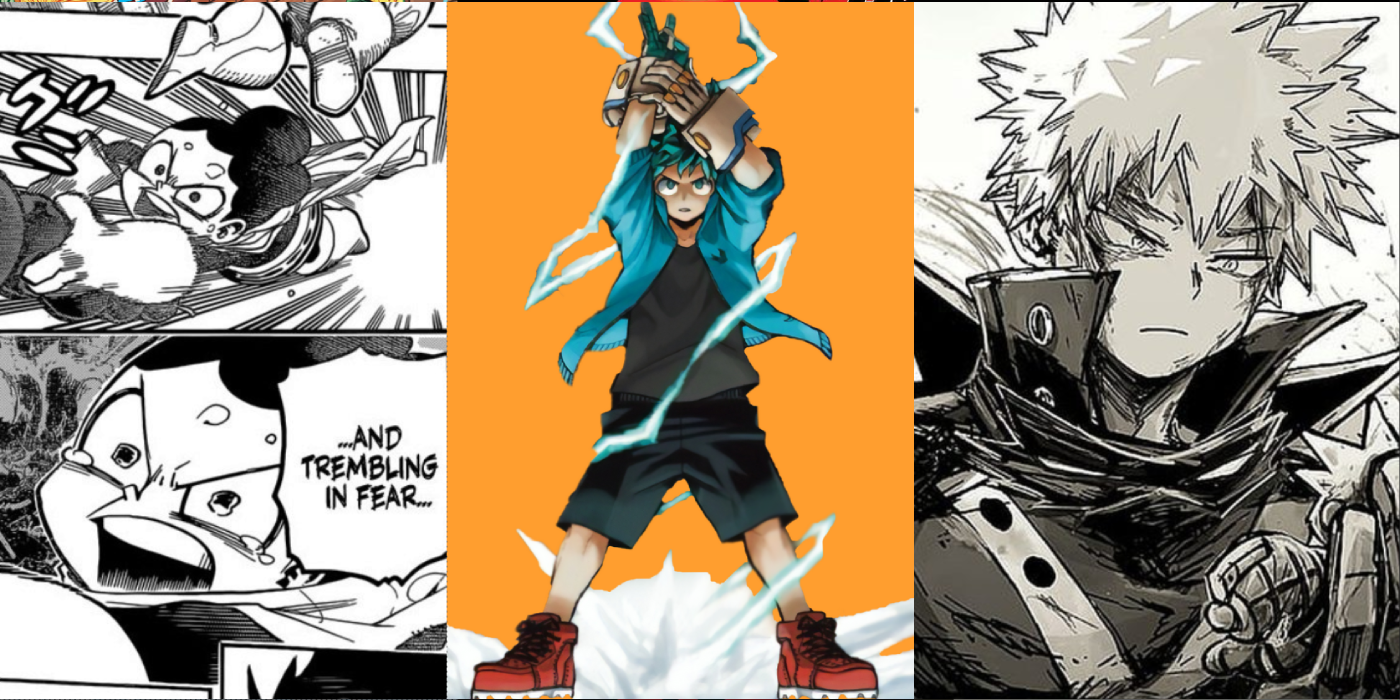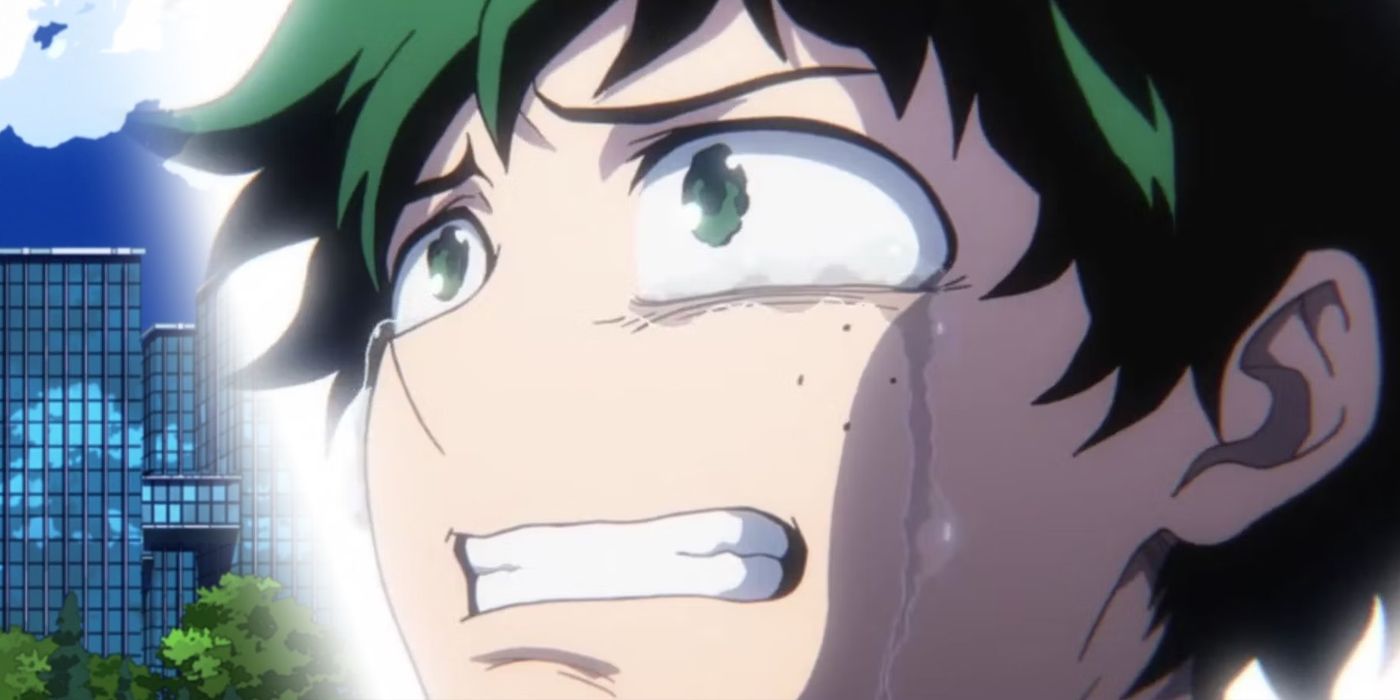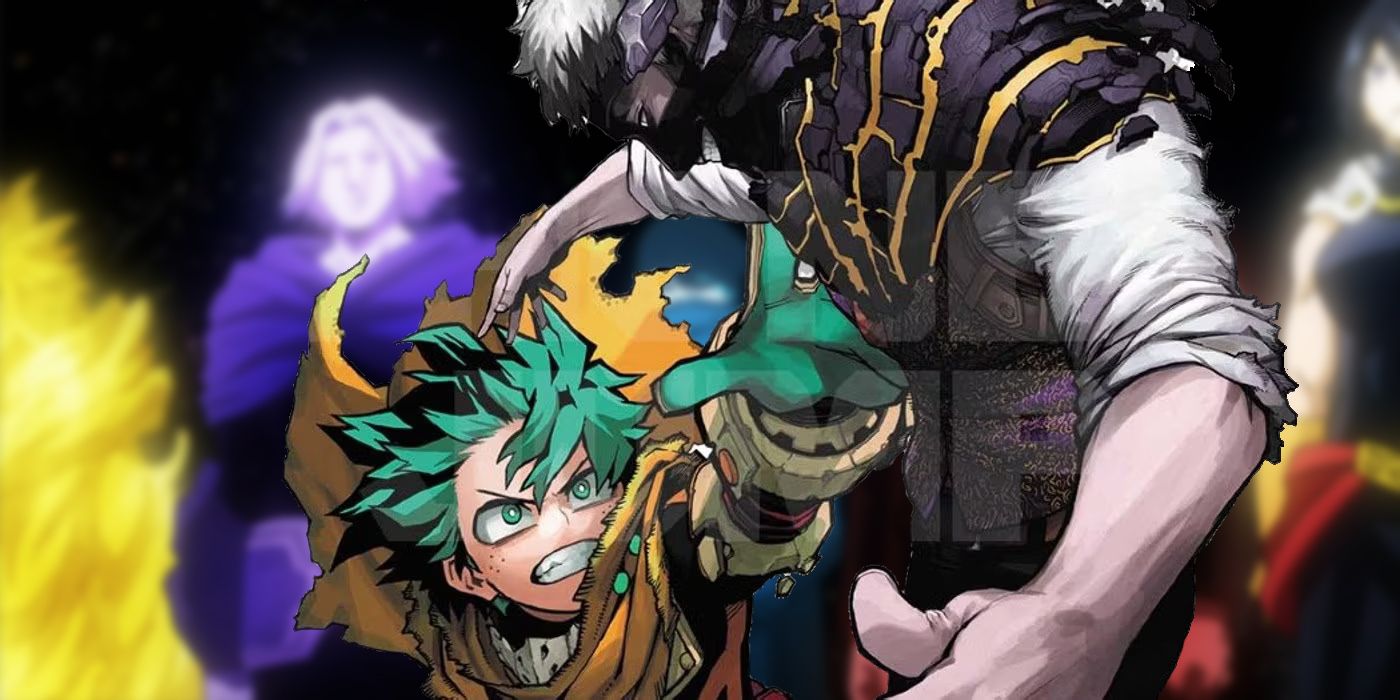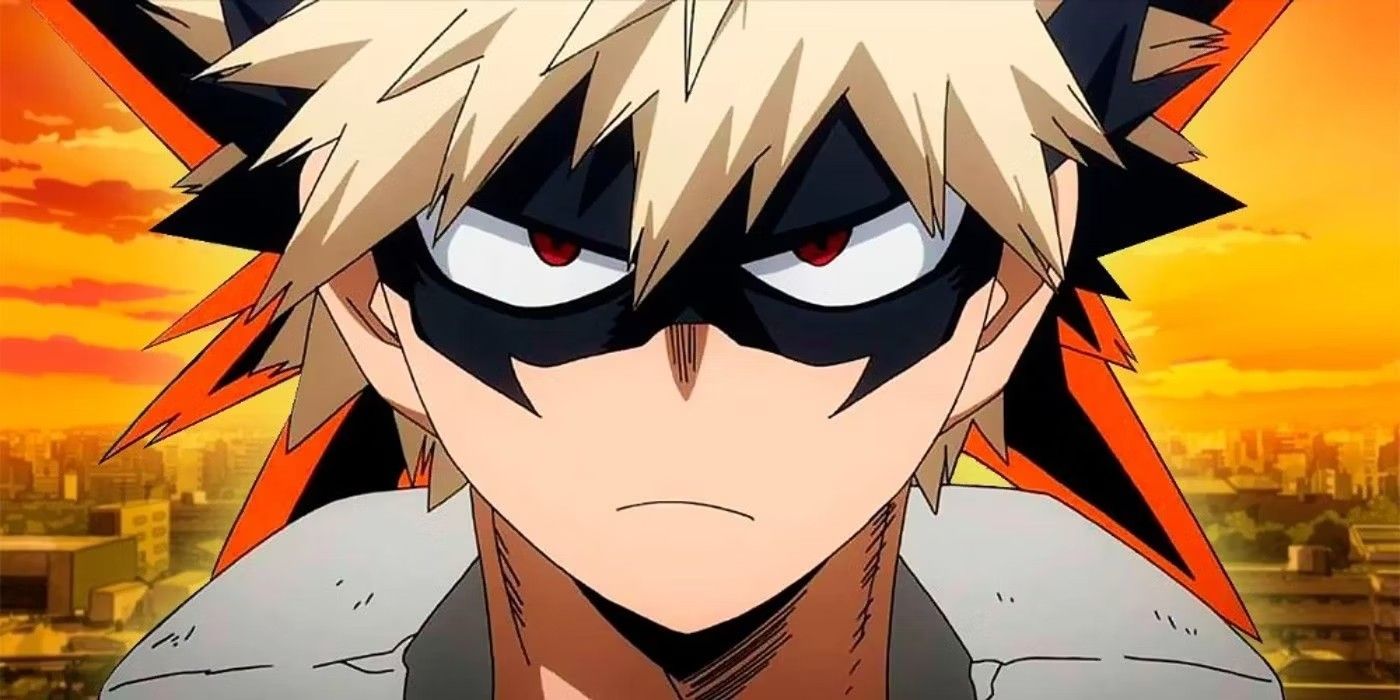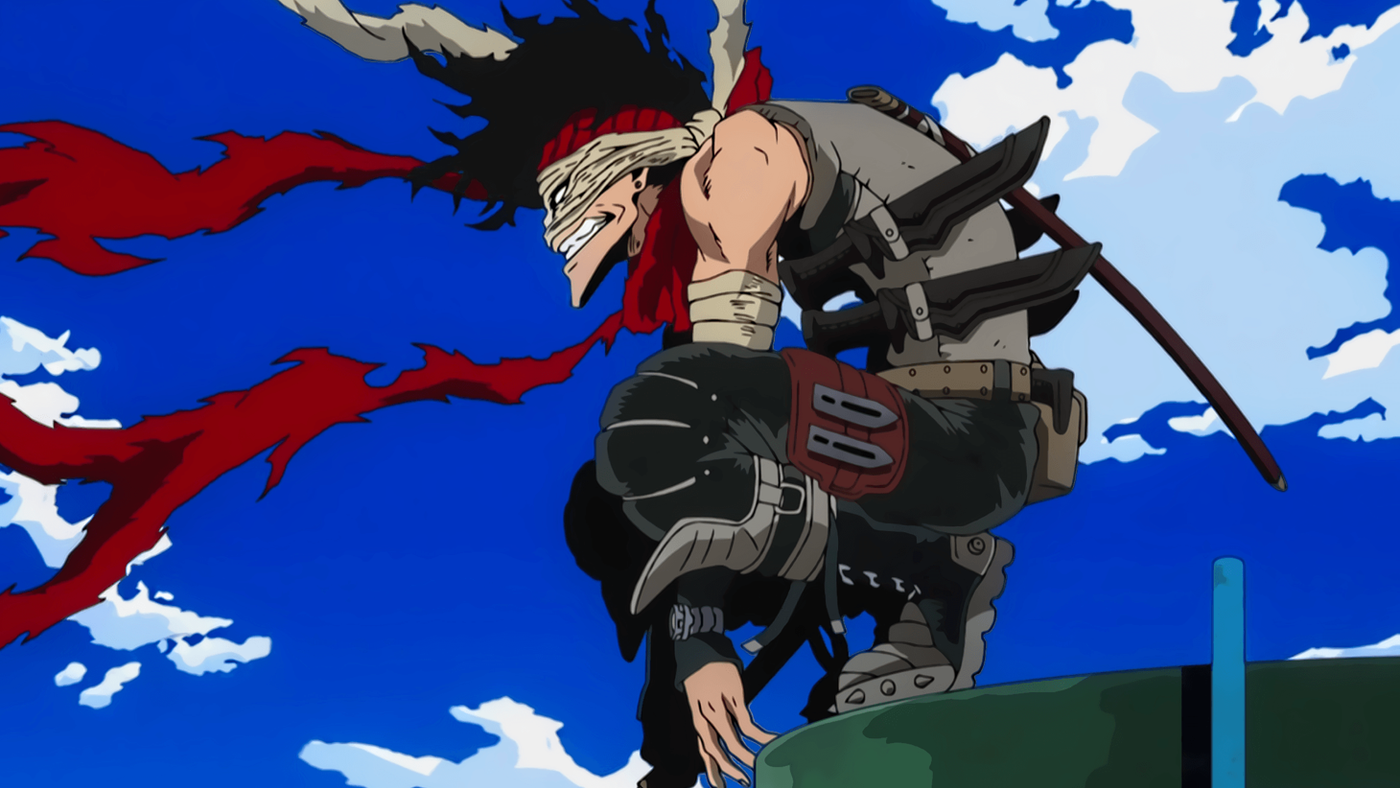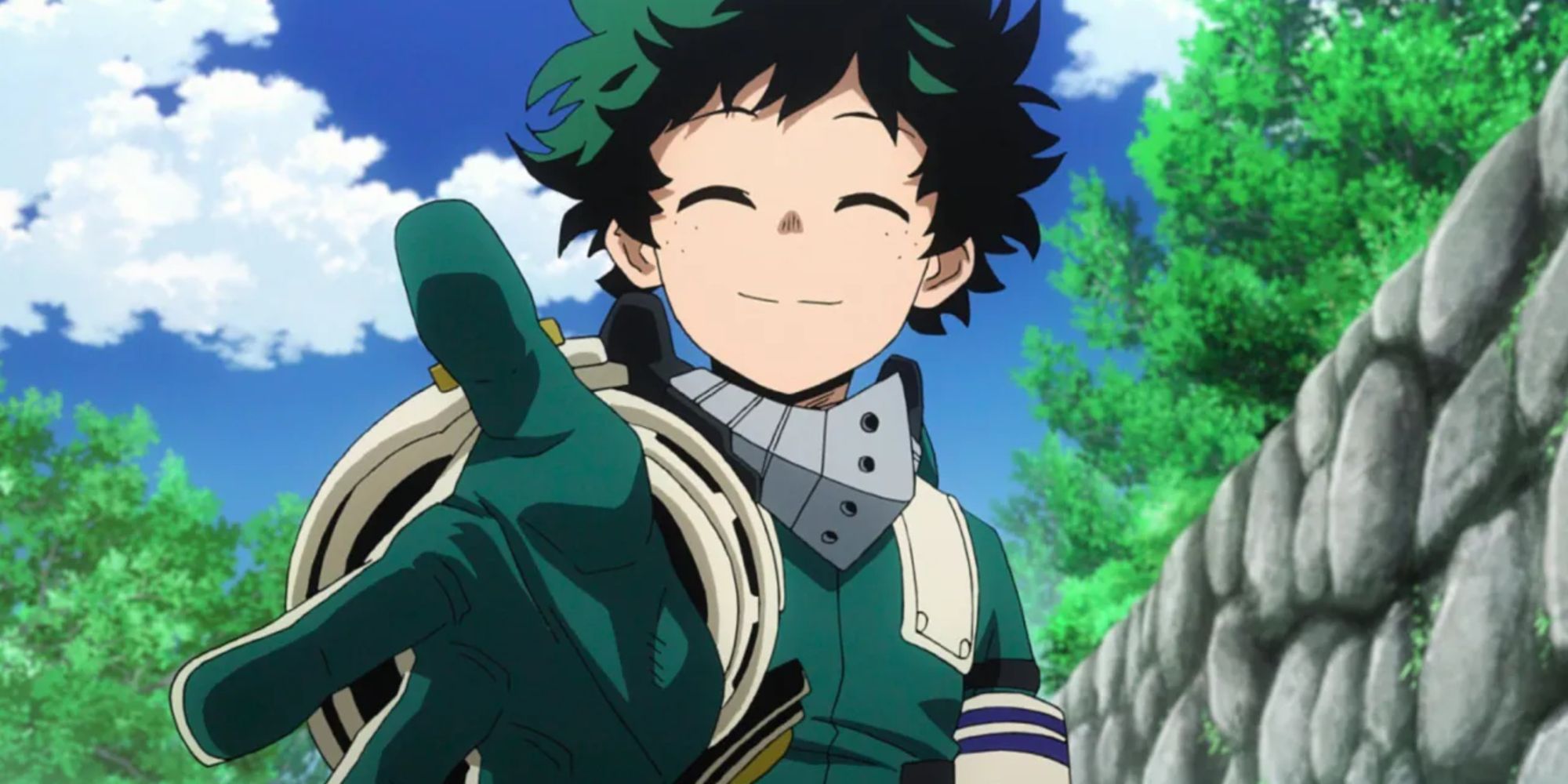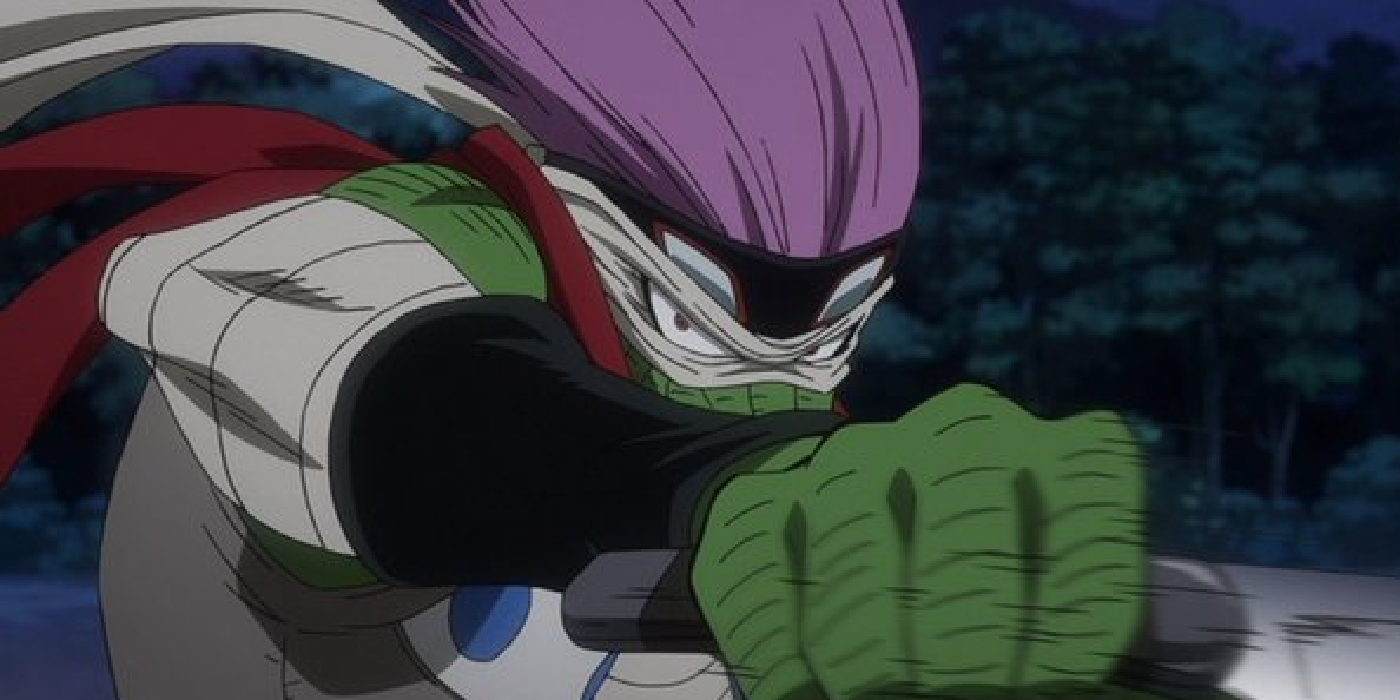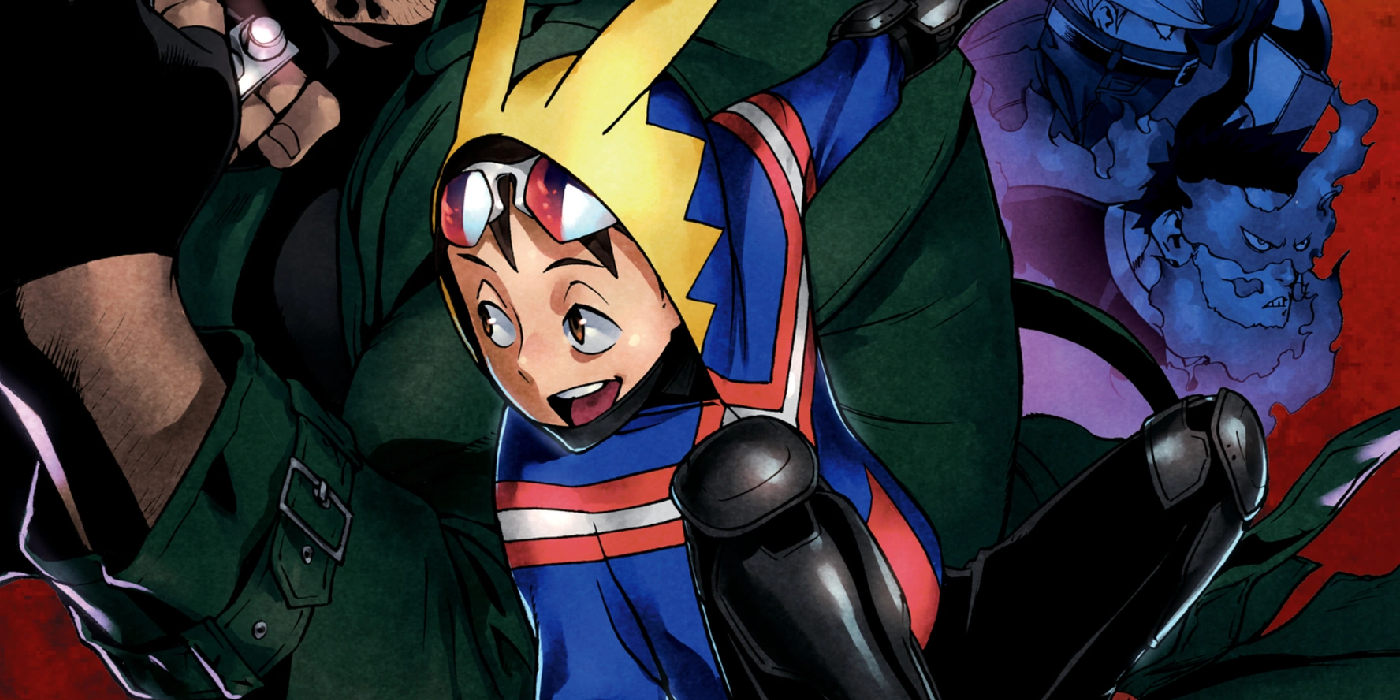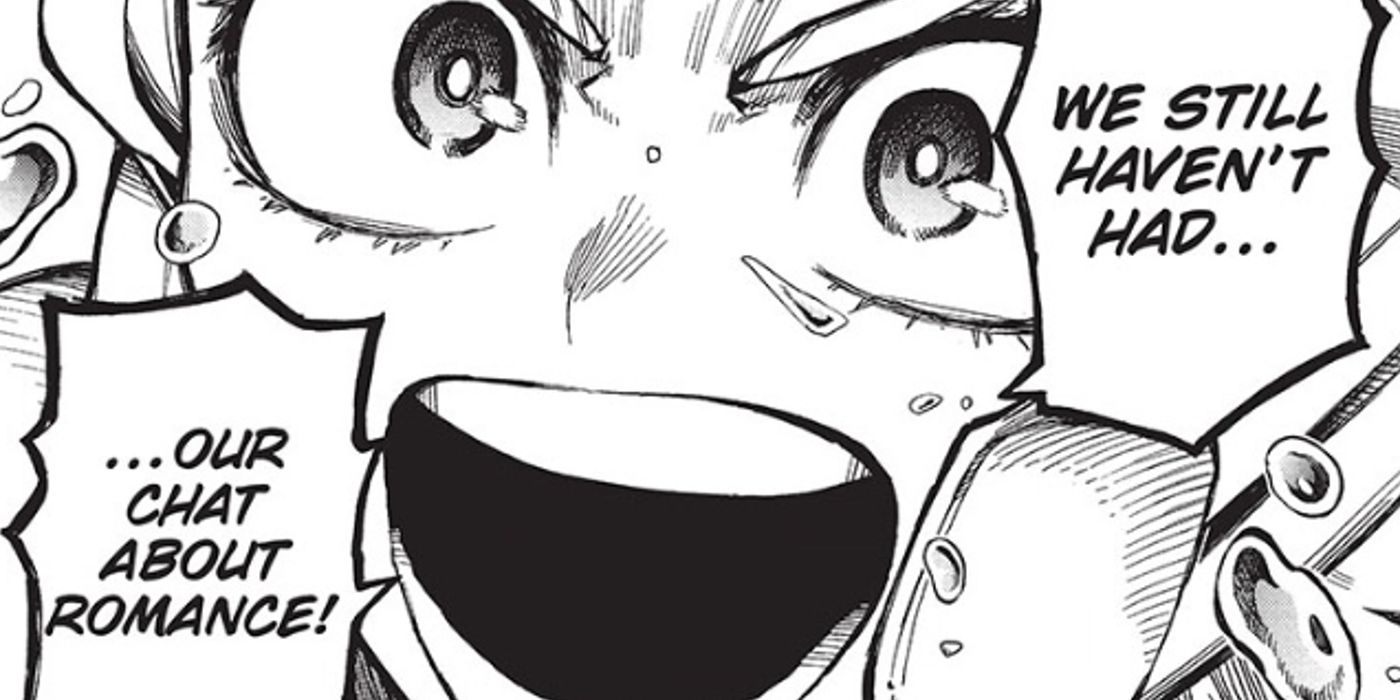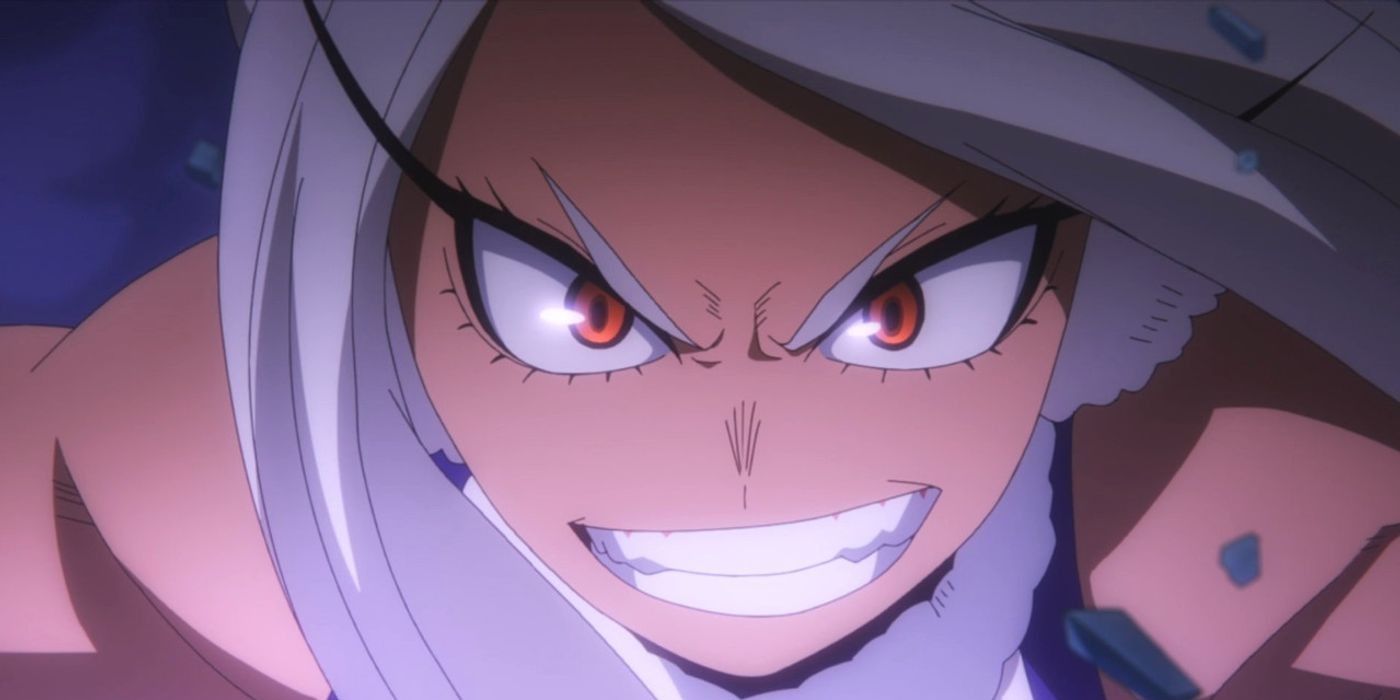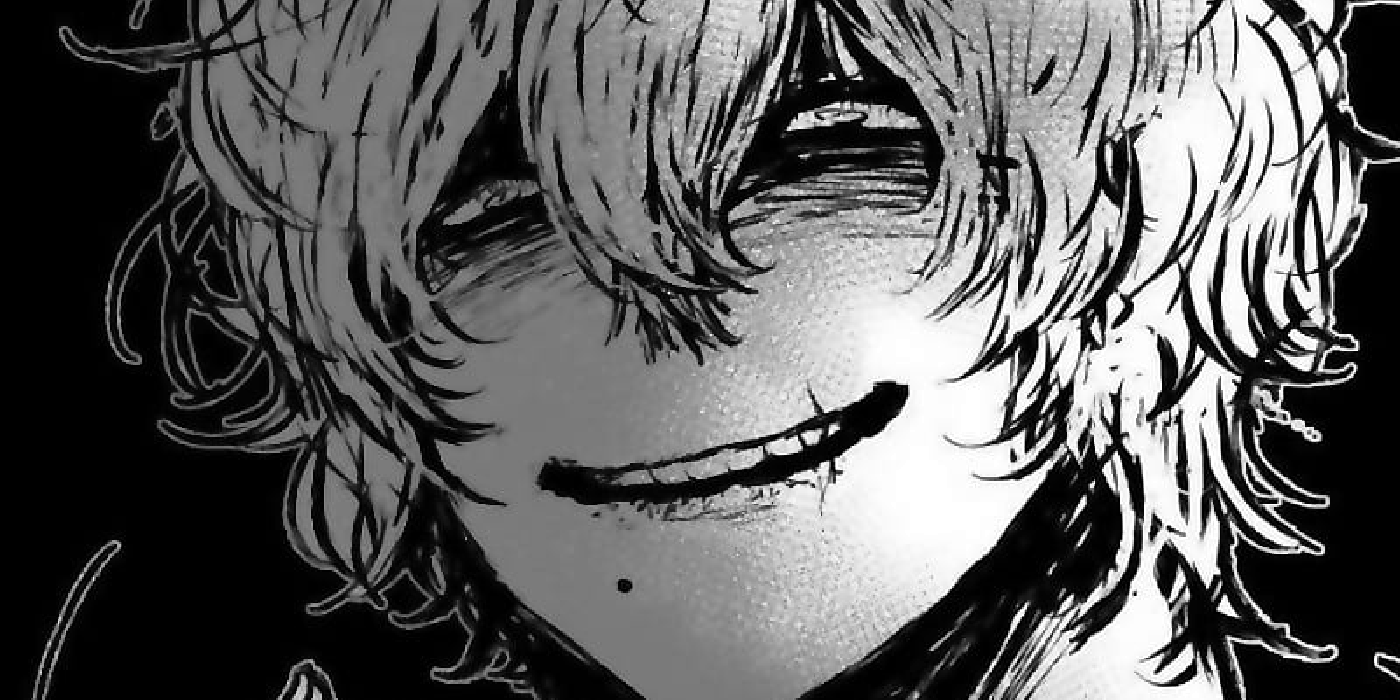My Hero Academia was once the biggest shounen of the modern generation, but in recent years, series such as Jujutsu Kaisen and Demon Slayer have settled themselves as the next big things. Still, My Hero Academia remains a solid seller in its own right and maintains a dedicated fan base.
It should be said, however, that My Hero Academia hasn’t aged the best when rereading with experienced eyes. Quite a lot of flaws start presenting themselves. For some former fans, these harsh realities made them quit reading the series altogether.
Deku Is Kinda Bland
It’s not like Deku is the first bland shounen protagonist. Far from it, he’s just another in a long line of white-bread main characters in the manga. Unfortunately, Deku has a particularly bad case of this. He’s basically as basic of a determined shounen protagonist as a character can be, and this presents many problems. First of all, it makes his blandness stand out when he’s put against such strong personalities as his mentor All Might, or rivals like Bakugo and Todoroki.
There’s so much more going on with all three of them in terms of backstory and personality. Meanwhile, Deku has no real internal struggles or flaws. His family is supportive, his friends are great, and his mentor is present. These in themselves aren’t bad things, but Deku himself isn’t interesting enough to carry a story alone. His “flaw” is that he’s too dedicated to being a hero, which isn’t a flaw at all.
One For All Ex Machina
Another aspect that makes Deku so frustrating is that his powers literally change to the whims of the plot. Quite literally, new powers suddenly exist if it means Deku can win an encounter. The reveal that One For All actually hands down powers makes a lot of the encounters in the series have a lot less tension as a result. Deku’s intelligence is barely a factor thanks to this.
Without warning, some new One for All power will suddenly make itself known. It’s a plot device that’s also very unreliable. There’s also the fact that it’s just a rather boring power at first too. It’s just super strength and super speed, which makes a lot of the fights for Deku feel much more similar than other, more interesting quirks like Bakugo’s or Todoroki’s.
Bakugo Has No Business Being a Public Hero
Bakugou is My Hero Academia’s most polarizing character by a wide margin. His toxic and abrasive personality makes him such a contentious character both for readers and characters in-universe. While there are many avenues to explore with Bakugo’s character, one thing that boggles the mind is his presence as a public hero.
Clearly, there are heroes who aren’t public, such as Aizawa, who nevertheless are effective at their jobs. Public heroes exist to keep the citizens calm. Bakugo is literally the opposite, making children cry in incredibly tense situations. There’s just no reason for Bakugo to be a public hero when he can barely keep his friendships with Class 1-A afloat.
Stain Has No Real Points To Make
Stain is one of the earliest major villains that Deku faces, and there was a lot of potential for his character. A man who was so cynical that he started killing heroes because he believed they were “oppressing the people”. However, upon rereading, this is not true. All the heroes shown in the series were unequivocally good guys. There’s not a single instance of heroes abusing their power on the innocent.
One could say that Stain is insane, but that just makes his character worse. Nothing is compelling about fighting a guy who doesn’t make the heroes question their morals. They know for a fact he’s full of it, so it just boils down to boring black-and-white morality debates. The only real shade of gray is Endeavor, and even then, his sins are kept to his family, and not anything that Stain would have ever encountered firsthand.
Students Are Irrelevant Outside of Deku, Bakugo, and Shoto
It’s frankly astounding how useless the rest of the student body seems in comparison to these three prodigies. Sure, they manage to beat a minor villain or two. However, every single one of them inevitably has to rely on the big three of the first years to even the odds. It’s honestly an insult when one stops to think about how underutilized Class-1A is.
Every single one of these students should be seen as true hero material. Yet, in almost every encounter, it boils down to “waiting for someone better”. Even if the characters aren’t aware that Deku is coming, they’re always on the ropes, waiting to be saved by an adult hero or one of the big three. This even happens to Lemillion, the man who was once seen as Deku’s successor.
Poorly Written Racism
No, the author wasn’t being racist towards anybody. Horikoshi does seem like he genuinely wants to explore the topic for his story. Unfortunately, he doesn’t quite pull it off. In the manga, a community of people with quirks that changed their physical appearance banded together to fight against the oppression of their kind by “normal-passing” quirk users. Unfortunately, this was presented with zero screen time dedicated to it. There's a story to be told with mutant quirks being oppressed, but there were better ways to do it than out of nowhere.
It could even be seen as a negative build-up, because the opposite has been shown to readers from the very start. Heroes with physical alterations such as Octopus, Anivoice, and Pinky are all openly beloved, with no big deal being made about their appearance. The hand wave of “they were raised in a big city” also comes out of nowhere, and from the mouth of an unhinged villain, so it just comes off so weird. Not to mention, implying racism does not exist in big cities is incredibly ignorant of real life. Frankly, the only societal bigotry seen in the series was against the quirkless, much like Deku formerly was.
The Spin-off Is More Consistent Quality
This is more of a meta example, but fans of MHA have read Vigilantes and noticed something rather unfortunate. It’s the fact that characters in Vigilantes are just far better written across the board than they are in the main series. Even the younger versions of adult heroes get far more characterization in Vigilantes than in My Hero Academia.
This is something that can only really be noticed on a reread. Vigilantes feel right at home in the My Hero Academia universe, but it also manages to have more well-rounded and relevant characters. Plus, there’s always the hot take that Koichi is a much better “Deku’ character than Deku ever was. An All Might fanboy who despite having unimpressive powers, strives to be a hero in his own right.
Lack of Focus on Female Characters
This one is a problem that became more prevalent in later arcs. While this isn’t a problem unique to My Hero Academia as far as shounen is concerned, it’s frankly quite bad in contrast with its inspirations. For example, Naruto features a female Hokage in Tsunade, and the literal final boss of the original series was the goddess Kaguya. In contrast, female characters in My Hero Academia rarely graduate to the main character status.
Oftentimes, they exist as bystanders, which is a shame considering their otherwise interesting motivations and personalities. Characters like Ochako and Toga also have their motivations revolve solely around Deku. That’s not to say that there are no relevant female characters, of course, far from it. However, they do have their own set of problems.
Relevant Female Characters Tend To Get Maimed
Characters like Miruko and Midnight are great adult characters who do play major roles in the heroes’ power structure. Unfortunately, they have exceedingly harsh fates befell on them. This isn’t to say that female characters should remain unharmed. They should be in danger just as much as the men. The problem arrives when the relevant female characters always get the boot. When there are already so few relevant female characters, shaving their numbers like this just comes off so tactless.
Most disrespectfully, Midnight dies offscreen in a fight against a villain that wasn’t even named. She was arguably the most major adult female character and she doesn’t even get to have a moment. This is something that doesn’t happen to any other character's death, all of whom are given far more reverence. Curious, the only woman in the Meta Liberation Army, is also the only relevant one of their number to die, so villains aren’t safe either.
My Plot Armor Academia
The most annoying realization by far when rereading My Hero Academia is the abundance of plot armor. It’s always bad to have inexplicable survivals happen over and over again, but it’s even worse when they're the main hero and villain. Deku keeps throwing himself into suicidal situations, and always manages to come out the victor, regardless of actual experience.
Shigaraki is even worse, as he’s a villain who is consistently portrayed as a bumbling anti-social teen, whose most high-profile kill against the good guys was that of a minor hero. He’s always been beaten by the good guys and it’s frankly a shocker they see him as any sort of threat. He rarely uses his instant kill powers to actually instantly kill people.

